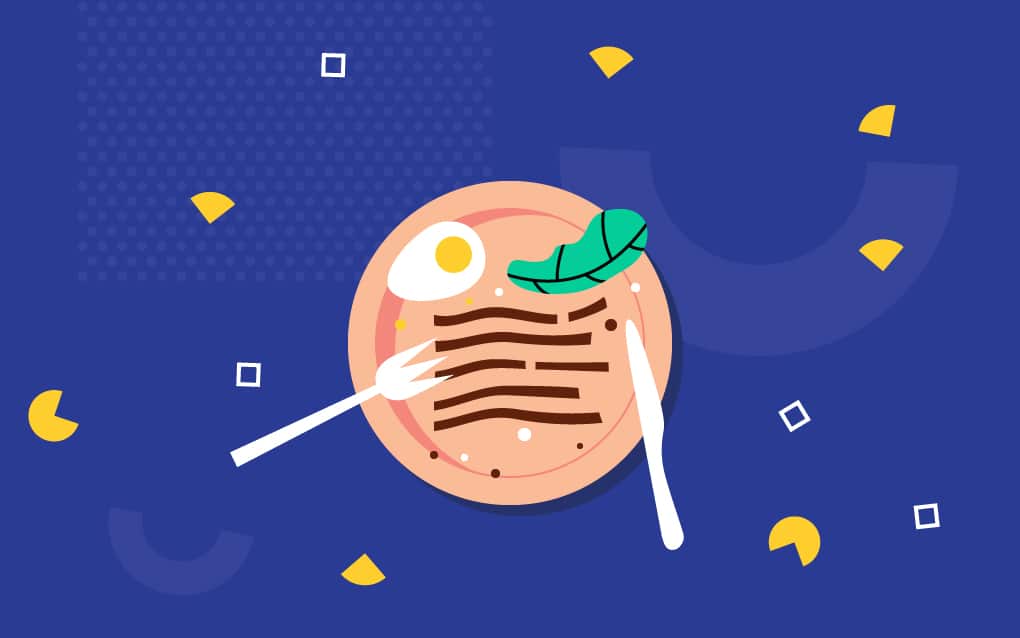As a content creator, you’re used to churning out new content all the time – after all, a successful content marketing and SEO strategy relies on fresh, relevant material posted on a regular basis. But what does that mean for old content? Should you delete it, or repurpose it?
You probably spent hours – even days – crafting that content and it likely drove strong traffic at one stage or another. But content ages. It becomes outdated, forgotten, and ignored, all of which can negatively affect your Google search rankings. So how do you ensure that content is helping, not hindering, your SEO and domain authority growth?
In some cases you’re better off deleting old content, while in others you can dust it off, refresh it and repost it.
Here’s how to tell the difference.
How does old content impact Google SEO rankings?
One of the key reasons to audit and manage old content is to ensure you maintain a strong Google SEO ranking. And what ranked well in search a year ago may not rank so well now. Google rewards quality, so if you don’t take the time to improve or remove outdated or poor-quality content, it may harm your site rankings and domain authority.
So how can you ensure your content strategy stays up to scratch?
Late last year, Google rolled out one of its most comprehensive algorithm changes to-date. And luckily, they gave us the guidelines we need to follow in the form of a handy acronym: E-A-T.
E-A-T stands for ‘Expertise’, ‘Authority’ and ‘Trust’. In simple terms, this means if your content establishes you as an expert and authoritative voice in your field and generates trust among your readers, it’ll perform better in search. If it doesn’t, you’ll drop in the rankings.
What kind of content meets E-A-T?
For your content to make the E-A-T cut, it should be:
- Original
- Accurate
- Readable
- Shareable
- Engaging, entertaining and educational
- Mobile-friendly
- Long-form
It should also include:
- Optimised title tags and meta-descriptions
- SEO-friendly URLs
- Relevant inbound and outbound links
When you put that all together, the goal is to create meaty yet digestible content that can be easily scanned thanks to bullet points, headers and subheaders. In 2020, the best content emphasises certain information with bolded, underlined or italicised fonts and includes visual elements like images, infographics and tables.
So, if your content is up-to-date and ticks off all the E-A-T criteria, you can leave it on your site. But if it doesn’t, you should think about updating it or removing it. Otherwise, it might cause Google to index those less-important pages instead of focusing on your best content.

How to perform an SEO content audit
So we know it’s important to update old content to maintain strong SEO rankings and domain authority. But how do you go about turning those content rags to digital marketing riches? There are a few steps you can take to turn it around.
Step 1: Gather a list of links
Do a sweep of your site to figure out which pages are old, outdated and not ranking as highly as they could.
Use a tool like Google Analytics to review your site stats and pageviews. Any pages with low pageviews are a good place to start.
Step 2: Evaluate your content
When you’re evaluating those pages for E-A-T, work through the content from top to bottom and ask yourself these questions:
- URL: Is it SEO-friendly? Could it be shortened?
- Title: Does it contain a strong keyword? Does it hook the reader?
- Author: Is the author an expert in the field? Does the bio convey his/her expertise, or mention any awards or associations?
- Date: How long ago was the page published?
- Links: Are there inbound and outbound links? Try to have a balance of both types of links – inbound links encourage people to stay on your site for longer, while outbound links confirm your credibility.
- Readability: Is the content scannable? Could the text be broken up for better flow?
- Visual elements: Could the page be more visually appealing?
- Mobile presentation: How does the page look on a mobile device?
- Word count: Remember, Google favours long-form content. Quantity doesn’t necessarily equal quality, but the most highly-ranked pages often have 500 words or more.
- Number of reads or shares: How many times has the piece been read or passed on? Modern readers are happy to share content they liked and engaged with.
- Purpose of content: Is the content tailored to a particular reader? Does it answer their questions, or inspire them to take action?
This process can be time-consuming, but as content marketers, our mission is to make sure our content works hard and ranks high.
Step 3: Categorise your content
After you’ve combed through your content, put each page into one of three categories: ‘Keep’, ‘Improve’ or ‘Remove’.
How to rework or remove content for optimised SEO
Option A – Keep your content as it is
You may not need to make any changes to your content if it:
- Meets all the E-A-T criteria
- Attracts good traffic and engagement
- Ranks on the first page – and ideally, the top 3 results – for its keyword
- Gets frequent social shares and links
Option B – Improve your content
It takes a lot more time to create completely new content than it does to optimise old content. If your content is ranking well and ticks off most of the things on the list above, but is a little outdated, you can:
- Update it: Refresh the information so it’s relevant and consider any other keywords that might help to capture new traffic. Try to keep the same URL.
- Consolidate it: Do you have multiple pages on the same topic? Think about merging those pages into one and publish it to the page that generates the most traffic.
- Rewrite it: Spend some time overhauling a page that is helpful, but is poorly written and/or gets little-to-no traffic, links or shares. Then, 301 redirect the old page to the new page, with its new (optimised) URL.
Top TipOnce you’ve improved your content – promote it! You could share it on social media, incorporate it into your next EDM, or feature it on the home page or another prominent place on your site.
Option C – Remove your old content
In some cases, it’s best to cut your losses and delete old content – but try not to make this your go-to option. As Google’s John Mueller said, “Improving [content] means that the rankings can only go up, whereas by removing it, can cause loss of rankings instead of the gains that some people think content removals will do”.
Make sure that anything you remove really can’t be saved – content that’s irrelevant, unnecessary or unhelpful to your audience. Things like old job advertisements, duplicate blog posts, former employee profiles and old products and services pages can all be deleted. The same goes for pages with syndicated or plagiarised content and next-to-no traffic, pageviews, links, shares, engagement or conversions.
There are three ways to handle these pages:
- Deindex and delete them: This means they’ll never show up on your site again.
- Use a 301 redirect: For example, point your readers to newer products or services, or to your general careers page. Redirects can slow down your site, so choose these pages carefully.
- Write a custom message: You could add a message and related links to help your reader to find the content they’re looking for. You might write, “This role has been filled, but head on over to our Careers page to see our current openings,” and include a link. Likewise, if a product is out of stock, let the reader know and link them to a similar page.
Let’s talk content
While Google algorithms and trending topics will come and go, you can count on this: High-quality content is king.
An effective content marketing strategy is one that provides value for your customer at all times – that’s what search engines will continue to reward and what your customers will always seek out.
A data-driven approach will give you that value and help you to create meaningful, relevant content that speaks to your customers’ needs and interests.
If you’re looking to enhance your content marketing and SEO strategy, get in touch with our team at Yoghurt Digital today!

